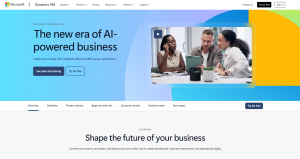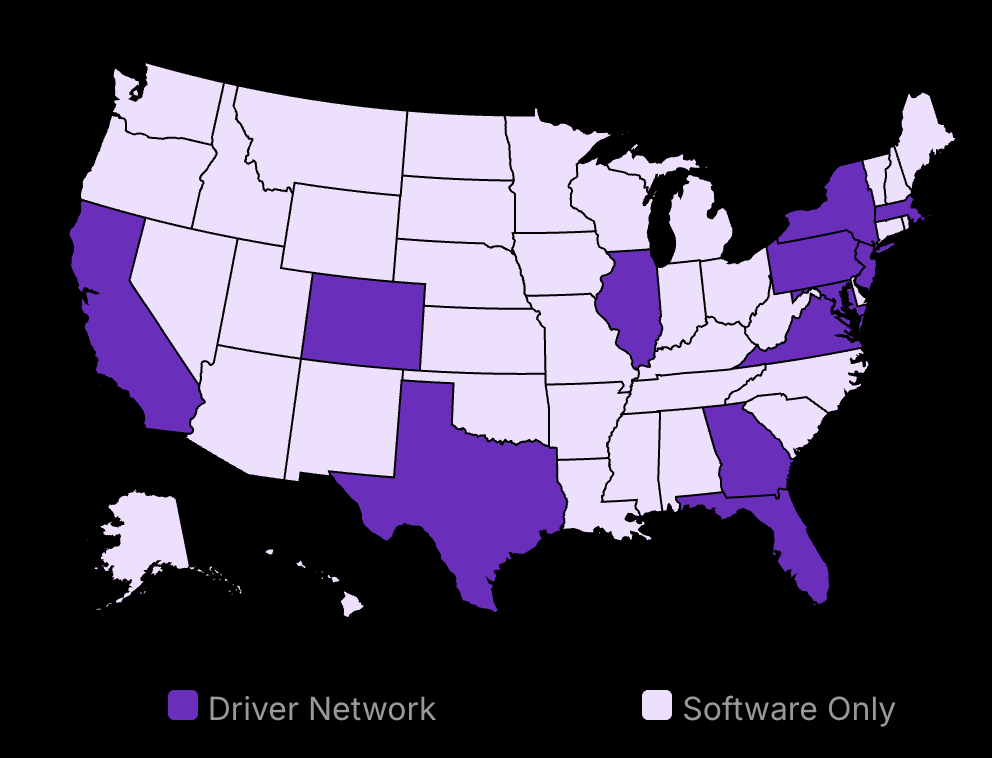In 2025, the battle for talent isn’t fought with salaries alone. The companies winning the war for top performers know something others don’t: providing fringe benefits, which are essential employee benefits, shows that a paycheck is just the beginning. The real competitive edge? Fringe benefits.
Let’s be honest – when was the last time an employee jumped ship for a 5% raise? Rarely. But offer them flexible work arrangements, mental health support, employee discounts or student loan assistance, which can increase employee satisfaction and watch their loyalty and job satisfaction transform overnight.
Here’s something surprising: 72% of employees would accept a lower salary for the right fringe benefits. Yet most businesses still pour resources into marginal salary increases while neglecting the benefits that drive retention among current employees.
The disconnect is simple but costly. Employees want benefits that improve their lives, not just their bank accounts, to retain talent. Companies think throwing money at people solves everything.
The data is clear. Organizations with strong fringe benefits programs see 31% lower turnover and 21% higher productivity. These aren’t just perks—they’re strategic business tools, with numerous fringe benefits.
The good news? Implementing effective fringe benefits doesn’t require a Fortune 500 budget. It requires understanding what your people truly value.
This guide will walk you through exactly what fringe benefits are worth offering in 2025, how to implement them cost-effectively, and how to avoid the tax pitfalls that sink many well-intentioned programs.

Lower your delivery costs by 23%
How we reduce costs:
- No delivery vehicle expenses
- Optimized local routes
- Pay-per-delivery model
- Average 23% delivery cost reduction
Understanding Fringe Benefits
The answer to the question “What are Fringe benefits?” is additional compensation beyond basic salary that can include health insurance, retirement plans, and unique perks
These fringe benefits help businesses attract and keep talented employees in competitive job markets
Implementing effective fringe benefits requires careful planning and alignment with both company goals and employee needs
What Are Fringe Benefits?
Fringe benefits are forms of compensation provided to employees beyond their regular wages or salary. These fringe benefits play a key role in creating attractive employment packages that help companies recruit and retain valuable staff members. In the competitive job market of 2025, offering the right mix of fringe benefits, including uncommon fringe benefits, has become essential for businesses of all sizes, including education assistance.
The term “fringe benefits” covers a wide range of offerings. Some are required by law, while others are optional perks that employers choose to provide. Legally required benefits include Social Security and Medicare contributions, unemployment insurance, and workers’ compensation insurance. While these mandatory benefits form the foundation of any fringe benefits, it’s the optional benefits that often make the biggest difference in attracting top talent.
Optional fringe benefits fall into several categories. Health-related benefits typically include health plans, medical, dental, vision insurance, and retirement planning services. These remain among the most valued benefits for employees across all demographics. Financial benefits like retirement plans, stock options, and profit-sharing arrangements help employees build long-term wealth. Work-life balance benefits have grown in importance, including professional development opportunities with paid time off, flexible scheduling, and remote work options becoming standard expectations rather than exceptional perks.
Common Fringe Benefits Examples
The range of fringe benefits offered by employers in 2025 is broad and varied. Here are some of the most common examples:
Health insurance: Medical, dental, and vision coverage remain a cornerstone of most packages
Retirement plans: 401(k) plans, pension plans, and other retirement savings options
Paid time off: Vacation days, sick leave, personal days, and paid holidays
Life and disability insurance: Protection for employees and their families
Educational assistance: Tuition reimbursement, student loan repayment help, and professional development funds
Wellness programs: Gym memberships, mental health support, and health screening services
Financial perks: Profit sharing, bonuses, and stock options
Work flexibility: Remote work options, flexible scheduling, and compressed workweeks
Family support: Childcare assistance, parental leave, and adoption assistance
Commuter benefits: Transportation allowances, parking subsidies, or company vehicles
Some employers have created distinctive fringe benefit programs to stand out in the job market. For example, companies like Airbnb offer travel credits, while others provide on-site amenities like fitness centers, free meals, or even nap pods. These unique perks, such as athletic facilities, can serve as powerful differentiators when competing for talent.
How to Offer Fringe Benefits with Education Assistance
Implementing an effective fringe benefits program requires careful planning and execution. For businesses looking to create or enhance their benefits offerings, following a structured approach can lead to better outcomes and a stronger return on investment. Incorporating a well-designed benefits package is crucial for attracting top talent in today’s competitive market. Tailoring benefits to address employee priorities while aligning with your company goals can significantly enhance recruitment efforts. To learn more about how to create a benefits package that appeals to the best candidates, explore our comprehensive guide on building an effective benefits package.
The first step is conducting a thorough assessment of your company’s goals and financial capacity. Determine what you hope to achieve with your benefits program—whether it’s improving recruitment, boosting retention, enhancing productivity, or some combination of these objectives. Then, establish a realistic budget that balances the cost of benefits against their potential value to your organization. Incorporating efficient logistical strategies can also enhance the administration of fringe benefits, particularly when physical goods or services are involved. Utilizing advanced route optimization techniques ensures timely and cost-effective delivery, benefiting both the company and its employees. By streamlining these processes, businesses can reduce overhead expenses and improve the overall employee experience with their benefit offerings.
Next, gather input from your employees. This can be done through surveys, focus groups, or individual interviews. Understanding what your workforce values most will help you design a package of benefits that addresses their specific needs and preferences. Remember that different employee segments may have different priorities—younger workers might value student loan assistance, while employees with families might prioritize health insurance and flexible scheduling.
With this information in hand, you can begin researching and selecting specific benefits to offer. Work with benefits consultants, insurance brokers, or other specialists to identify options that fit your budget and objectives. Consider both traditional benefits and innovative offerings that might appeal to your unique workforce.
Implementing Effective Fringe Benefits
Learn practical methods to understand what benefits your employees want
Discover how to connect your benefits program to business goals
Create a measurement system to track the success of your benefits
Working with Employee Preferences
The foundation of an effective fringe benefits program starts with understanding what your employees truly value. Without this knowledge, companies risk investing in benefits that fail to resonate with their workforce, leading to wasted resources and missed opportunities for employee satisfaction compared to normal wages.
To build a package that employees appreciate, you can start by collecting meaningful data about their preferences. The most direct approach is to conduct regular surveys designed to capture specific information about employee benefits and priorities. These surveys should include both structured questions (rating benefits on a scale) and open-ended questions that allow employees to express unique needs or suggestions.
Conducting Effective Employee Surveys with Educational Assistance
When creating your benefits survey, focus on asking specific, actionable questions rather than general inquiries. For example, instead of asking “What benefits do you want?”, try “Rank these five health benefit options in order of importance to you” or “How important is childcare assistance on a scale of 1-5?”
The timing of your surveys matters too. Consider conducting them:
During onboarding, to capture new employee expectations
Annually, as part of benefits review cycles
Before major benefit package revisions
Following significant company changes (growth, restructuring)
The survey format should be accessible to all employees, whether through digital platforms, paper forms, or a combination of both. Many HR software solutions now include survey functionality with built-in analytics to help interpret results.
Analyzing Survey Results
Once you’ve collected survey data, the next step is proper analysis. Look for patterns across different employee segments to identify how preferences vary based on:
Age groups and generational differences
Job roles and departments
Family structures (single, married, with children)
Career stages (early career, mid-career, approaching retirement)
According to research, the value of fringe benefits typically represents about 31.6% of an employee’s annual salary. This significant investment deserves careful targeting to maximize its impact on employee satisfaction and retention, considering the employee’s gross income.
When analyzing results, watch for benefits that receive consistent high ratings across multiple employee segments—these represent your “core offerings” that should form the foundation of your package. Also identify specialized benefits that are highly valued by specific segments but might not appeal to your entire workforce.
Tailoring Benefits to Your Workforce Demographics
With survey data in hand, you can begin tailoring your package for benefits to match your specific workforce demographics. This process involves more than simply adding the most-requested benefits; it requires strategic thinking about the composition of your teams.
For example, if your workforce includes a significant number of parents with young children, benefits like flexible scheduling, childcare assistance, or parental leave policies might deserve priority. For companies with many early-career professionals, student loan repayment assistance might prove particularly valuable.
Consider creating benefit tiers or flexible benefit allowances that let employees select options most relevant to their life situations. This approach, sometimes called a “cafeteria plan,” allows employees to allocate a predetermined benefit allowance toward the specific benefits that matter most to them.
Aligning with Business Objectives
While meeting employee preferences is essential, effective fringe benefits must also support broader business goals. Benefits that align with company objectives create a win-win situation for potential employees: employees receive valued support while the organization advances its strategic aims.
The first step in this alignment process involves clearly articulating how your benefits connect to your company’s mission, values, and strategic objectives. This connection should be explicit rather than assumed.
Connecting Core Benefits to Company Values
You can start by reviewing your organization’s stated values and mission statement. For each core value, identify benefits that directly reinforce or demonstrate that value. For example:
If innovation is a core value, consider benefits that support continuing education, professional development, or creative sabbaticals.
If work-life balance is emphasized in your culture, flexible scheduling, adequate PTO, or wellness programs directly support this value.
If community involvement matters to your organization, volunteer time off or charitable donation matching programs reinforce this commitment.
When introducing or communicating about benefits, explicitly connect them to relevant company values. This helps employees understand the “why” behind your benefits offerings and reinforces your organizational culture.
For maximum impact, ensure your leadership team can articulate how specific benefits connect to company values. When executives communicate this alignment, it signals the strategic importance of the benefits program rather than treating it as simply an HR function.
Setting Strategic Benefit Objectives
Before implementing new benefits or revising existing ones, establish clear objectives that define what your benefits program should accomplish. These objectives should be specific, measurable, and connected to broader business goals.
Example objectives might include:
Reduce annual turnover rate by 15% through enhanced family-friendly benefits
Improve health outcomes and reduce healthcare costs by implementing comprehensive wellness initiatives
Attract 25% more qualified applicants for technical positions by offering competitive professional development benefits
Document these objectives and share them with stakeholders to ensure alignment across departments. HR teams should partner with finance, operations, and department heads to develop objectives that support each area’s needs while maintaining program cohesion.
Establishing Metrics to Measure Success
The effectiveness of fringe benefits can and should be measured. Without proper metrics, including benefit rates, it’s impossible to determine if your benefits program is delivering the intended value for both employees and the organization.
You can start by identifying key performance indicators (KPIs) that correspond to your benefit objectives. Common metrics include:
Utilization rates: The percentage of eligible employees using specific benefits
Employee satisfaction: Measured through regular surveys with benefit-specific questions
Retention impact: Comparing turnover rates before and after benefit implementation
Recruitment effectiveness: Time-to-hire and acceptance rates for job offers
Health and wellness outcomes: Reductions in absenteeism or healthcare costs
Financial impacts: ROI calculations for benefit investments
Conducting Benefits-Cost Analysis
Even the most appreciated benefits must demonstrate value relative to their cost. Conducting regular cost-benefit analyses and understanding federal income tax withholding helps ensure your benefits program remains financially sustainable while delivering maximum impact.
For each significant benefit, document:
Direct costs (premiums, payments, administrative expenses)
Indirect costs (time spent managing the benefit, compliance requirements)
Quantifiable benefits (reduced turnover, improved productivity, tax advantages)
Qualitative benefits (improved morale, enhanced reputation, alignment with values)
When possible, assign dollar values to both costs and benefits to calculate ROI. For benefits where direct financial return is difficult to measure, use proxy metrics like employee satisfaction scores or recruitment effectiveness.
Remember that some benefits deliver returns over different timeframes. Health and wellness programs, for instance, might show modest initial returns but deliver significant long-term value through reduced healthcare costs, absenteeism, and possibly an increase in gross pay.
Federal Income Tax Withholding Implications of Fringe Benefits
Fringe benefits are taxable by default unless specifically excluded by law
Proper reporting varies by benefit type and employee status
Strategic benefit selection can reduce the tax burden for both employers and employees
Reporting Fringe Benefits
The IRS has clear rules about fringe benefits. You must report most fringe benefits as part of employee compensation, as required by the internal revenue service . This rule affects how you handle payroll taxes and end-of-year tax documents.
The general rule is simple but strict: all fringe benefits are taxable and must be included in employee pay unless the law specifically excludes them. This means that most benefits you provide become part of your employees’ taxable income. For employees, these benefits must appear on their W-2 forms by January 31 each year. The IRS requires you to calculate the fair market value of each benefit, minus any amounts the employee paid toward it.
Different rules apply to different recipients. Benefits provided to independent contractors must be reported on Form 1099-NEC, while benefits for partners should appear on Schedule K-1 (Form 1065). Each form has specific reporting requirements that you must follow to avoid penalties.
Valuation Methods for Taxable Benefits
The IRS accepts several methods for calculating the value of fringe benefits. The most common is the fair market value method, which reflects what an employee would pay for the benefit in an open market transaction, such as life insurance. For company vehicles, you can use the Annual Lease Value method or the cents-per-mile rule, depending on your situation.
For some benefits, the IRS provides special valuation rules. Group-term life insurance, for example, has a specific table to calculate taxable value based on employee age and coverage amount. Company-provided meals have different valuation rules depending on whether they’re provided for convenience or as part of entertainment, as outlined by the internal revenue service .
Incorrect valuation is a common audit trigger. Two areas frequently misreported are employees’ personal use of company cars and health insurance for S corporation shareholder-employees. These errors can lead to significant tax issues if discovered during an audit.
Compliance Requirements and Deadlines
Beyond the January 31 W-2 deadline, you must follow specific timing rules for tax withholding on fringe benefits. You can choose to treat taxable fringe as paid on a pay period, quarterly, semi-annual, or annually basis. Most companies find it simplest to include the value in regular payroll periods.
You must withhold income tax on most taxable benefits. For some benefits like personal use of company cars, you can choose not to withhold income tax if you notify employees by January 31. However, you must still withhold Social Security and Medicare taxes regardless.
Record-keeping is critical. You need documentation showing how you calculated benefit values, proof of employee notifications, and records of tax withholding. These records should be kept for at least four years after the due date of the relevant tax return.
Maximizing Tax Efficiency
Strategic benefit selection can significantly reduce tax burdens. The key is understanding which benefits receive favorable tax treatment under current laws while considering gross income.
Several benefits can be excluded from taxable income entirely. These include health insurance premiums, contributions to qualified retirement plans, and certain educational assistance programs. By emphasizing these tax-advantaged benefits, such as qualified parking, in your compensation package, you provide more value to employees at a lower total cost.
Tax-Advantaged Benefit Options
Certain benefits have a special tax status that makes them particularly valuable. These include:
Qualified retirement plans (401(k), 403(b), SIMPLE IRA) that allow employees to save pre-tax dollars
Dependent care assistance programs (up to $5,000 tax-free)
Qualified transportation benefits
Employee achievement awards (up to $1,600 for qualified plan awards)
Business cell phones are provided primarily for business purposes
De minimis benefits—those so small that accounting for them would be unreasonable—don’t need to be reported. These include occasional meals, company-provided coffee, personal use of copy machines, and small holiday gifts. The IRS doesn’t specify an exact dollar amount, but these are generally understood to be benefits worth less than $100.
Educational assistance programs can provide up to $5,250 per year in tax-free education benefits. This covers tuition, tuition assistance fees, books, and supplies for courses at any educational level. This benefit has become increasingly valuable as more employees seek to improve their skills.
Section 125 Cafeteria Plans
Cafeteria plans allow employees to pay for certain benefits with pre-tax dollars, reducing both the employee’s and employer’s tax burden. These plans must comply with Section 125 of the Internal Revenue Code.
Under a cafeteria plan, employees can choose between taxable benefits (like cash) and certain qualified benefits that are tax-free. This arrangement reduces income taxes, Social Security taxes, and Medicare taxes for both parties. The tax savings can be substantial, often 20-40% of the benefit cost.
Setting up a cafeteria plan requires formal documentation and adherence to strict non-discrimination rules. The plan must not favor highly compensated employees in terms of eligibility or benefits. Testing must be conducted regularly to ensure compliance. While the administrative requirements are significant, the tax savings typically justify the effort for most organizations.
Flexible Spending Accounts (FSAs)
FSAs are one of the most popular components of cafeteria plans. These accounts allow employees to set aside pre-tax dollars for specific expenses:
Health FSAs cover medical expenses not paid by insurance, with a 2025 contribution limit of $3,300
Dependent Care FSAs cover childcare expenses with limits of $5,000 per household
Limited Purpose FSAs cover dental and vision expenses for employees who also have HSAs
The primary drawback of FSAs is the “use-it-or-lose-it” rule. Employees must use the funds within the plan year or a grace period, or they forfeit the money. Some plans allow a $640 carryover option for Health FSAs as an alternative to the grace period.
When properly implemented, FSAs can save employees 20-40% on qualifying expenses compared to paying with after-tax dollars. This makes them one of the most immediately valuable tax benefits you can offer.
Working with Tax Professionals
The complexity of fringe benefit tax rules makes professional guidance essential. Tax laws change frequently, including aspects of income tax withholding for cash allowances, and the consequences of non-compliance can be severe.
A qualified tax professional can help you identify tax-efficient benefit structures specific to your industry and workforce. They can also guide you through the documentation requirements and help you establish systems to track and report benefits correctly.
For organizations with complex benefit structures, an annual fringe benefit audit can identify potential compliance issues before they become problems. This review should examine how benefits are classified, valued, and reported to ensure all IRS requirements are met.
Regular consultation with tax professionals is particularly important when adding new benefits. What seems like a simple perk may have complex tax implications. For example, offering remote work stipends raises questions about whether the payments are taxable compensation or legitimate business expense reimbursements.
The cost of professional tax guidance is almost always less than the potential penalties and back taxes from compliance failures. The IRS can assess penalties of 20-40% of unpaid taxes, plus interest, based on inaccurate benefit rates for incorrect fringe benefit reporting.
Fringe Employee Benefits Rates
Fringe benefits, which include various services performed, have grown from simple perks to key parts of what makes a company attractive in 2025. By now, you’ve seen how these benefits and other benefits help both workers and businesses when they’re done right. The steps we’ve covered—from finding out what your team wants to keeping costs reasonable—give you a clear path to build a package that works.
Remember that fringe benefits are more than just nice extras. They show your team you care about their whole lives and employee benefits , not just their work hours. When done right, they help you keep your best people, bring in new talent, and create a workplace where people want to stay. In addition to focusing on fringe benefits, businesses can enhance operational efficiency by integrating advanced delivery management solutions. Exploring the capabilities of modern delivery management software can streamline logistics, improve customer satisfaction, and support smoother supply chain operations, aligning well with your company’s growth objectives.
As work keeps changing, your benefits will need to change too. Stay flexible, keep asking for feedback, and be ready to adjust. You shouldn’t forget to check that your benefits follow tax rules and truly match what your company stands for. To effectively manage and optimize your offerings, understanding the nuances of benefits management is crucial. For those looking to deepen their knowledge, our detailed post on managing employee benefits provides valuable insights into streamlining this process, especially for expanding organizations. Learn more about flexible approaches and best practices in benefits administration here.
The best benefit programs grow with your business. By starting or improving yours today, you’re making a smart investment in your company’s future and in the people who make it successful. In addition to optimizing employee benefits internally, businesses can enhance operational efficiency by using tools like a route planning tool. A reliable route planner helps streamline logistics, reduce transportation costs, and improve delivery times, all of which contribute to a more profitable and smoothly running company. Integrating such tools supports your workforce and aligns with your broader business strategy for sustained growth.



























